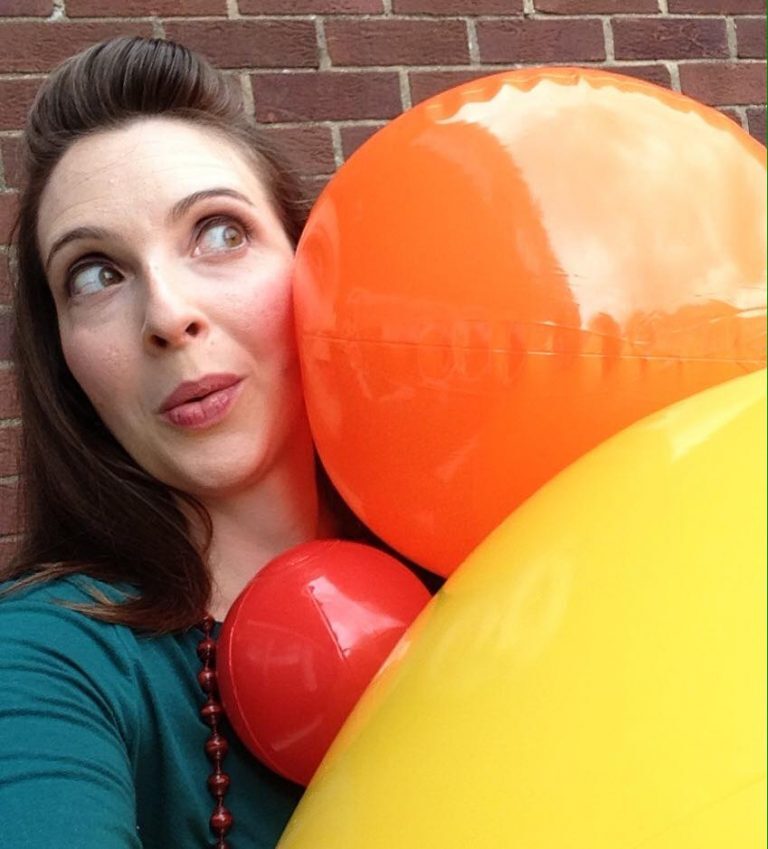Deep in the Sun’s interior, magnetic fields brew. They stretch and twist and form loops that can rise to the Sun’s surface, blocking heat from reaching it. These resulting cooler areas appear as dark splotches called sunspots. This same tangling and twisting of magnetic fields can also cause explosive activity like solar flares and coronal mass ejections, which send magnetic fields traveling throughout our solar system. On Earth, these bursts of energy may interfere with radio and GPS signals, and in space, they pose a threat to astronauts.
Dr. Maria Weber spent the first part of her career as a solar physicist studying, among other things, the magnetism that might give the Sun its spots and drive some of this explosive activity. Weber used simulations to model these ropes of magnetism and compared her findings to observations from NASA’s Sun-facing satellites and other sources. Now, she’s a physics professor at Delta State University in Mississippi and director of the school’s Wiley Planetarium.
(The following interview has been edited for length and clarity.)
How did you decide to become a solar physicist?
I grew up in Indiana, and I never thought I’d be a scientist. I was always just interested in physics because I thought it was cool to see how equations describe the world and the universe. But I didn’t think I would end up pursuing research or getting a PhD in science, I thought I would be a teacher. I decided to major in physics and philosophy in college.
As an undergrad, I did research at the National Solar Observatory for two summers. That introduced me to the world of solar astronomy and solar physics. I loved that experience. It was a close-knit group of astronomers because we were at an observatory on top of a mountain. I got to know a lot of people in the community, and that made me want to stay involved. It was just a lucky experience one summer that I was accepted to do solar physics, and it just stuck.
What was your research area?
I studied how magnetism makes its way to the Sun’s surface and mapped that with the properties of sunspots that we observe. The work is based on the idea that our Sun creates bands of magnetism in its interior, and then little loops of that magnetism rise to the surface, producing sunspots. The processes that those ropes of magnetism encounter as they make their way to the surface determine the location and tilt of sunspots.
My part of it was trying to make that connection between the Sun’s magnetism and what we see on the surface. I essentially turned different knobs in the simulation to adjust various parameters and looked at the effects near the surface of my simulation. Then I could compare those to solar observations from NASA missions like the Solar Dynamics Observatory and other sources.
Why is this work important?
If you observe a solar storm happening or a flare or coronal mass ejection, you have anywhere from 12-ish hours to a couple days before that thing is going to come and impact Earth if Earth is in its path. Wouldn’t it be cool if we could get several more days of warning, very accurately? If we can get a good handle on predicting these solar storms, we can be better prepared here on Earth to deal with them.
What do you do now?
I’m a physics professor and director of a planetarium in Mississippi. I loved research, but that was not all of me. I got so much pleasure out of doing outreach and astronomy communication work that I started thinking about what it would be like to work in a museum or a planetarium full-time. I found this opportunity in Mississippi where I get to be a professor and the director of a planetarium.
I’m still doing some things that relate to my expertise as a solar physicist, but I’ve got so much teaching that there’s not a whole lot of time left over for research. I also don’t have access to supercomputers like I used to. I knew that when I took this job. For me, I thought it would be worth it for the opportunity to see what I could do with a planetarium of my own. And in Mississippi, in our region, students don’t have a whole lot of access to science education resources in the schools. That’s one thing we can offer with our planetarium here.
How does being a solar physicist affect your view of the world?
I was learning all this stuff about the Sun, and then I realized, Hey, the Sun is not the only star. The Sun is one of 400 billion stars in our galaxy. A lot of the things we know about the Sun we can apply to other stars too, but there are just so many other possibilities for stellar behavior out there. It turns out that maybe our Sun is in some ways typical, and in some ways atypical. Thinking about how the Sun fits in with everything kind of makes me think about how we fit in with everything.
Credits: NASA’s Goddard Space Flight Center
Download this video in HD formats from NASA Goddard’s Scientific Visualization Studio
By Anna Blaustein
NASA’s Goddard Space Flight Center, Greenbelt, Md.






























